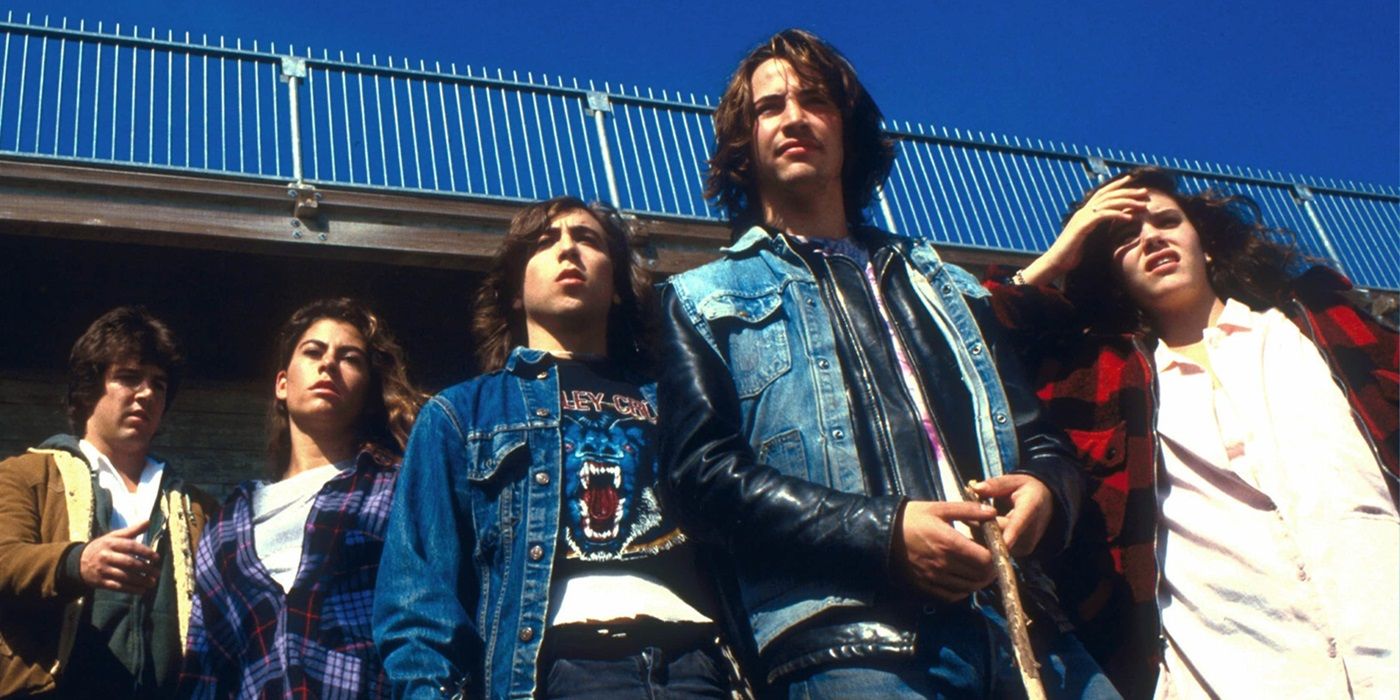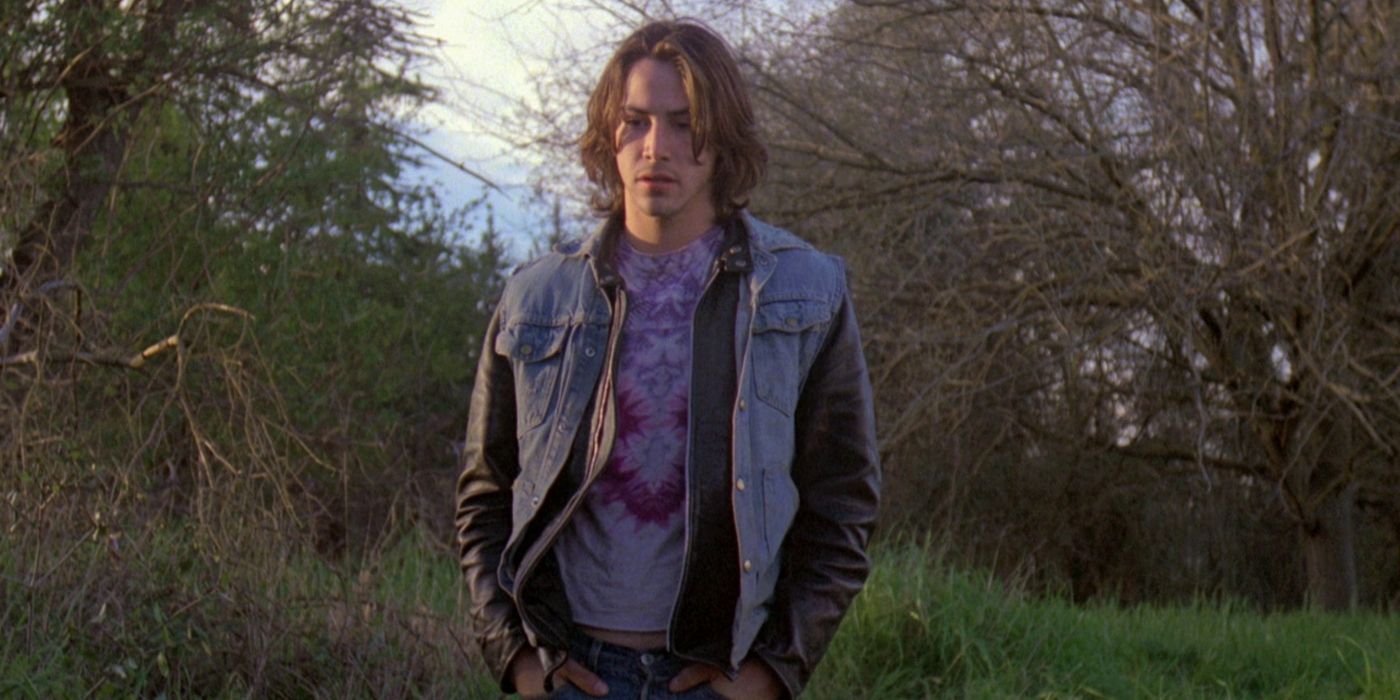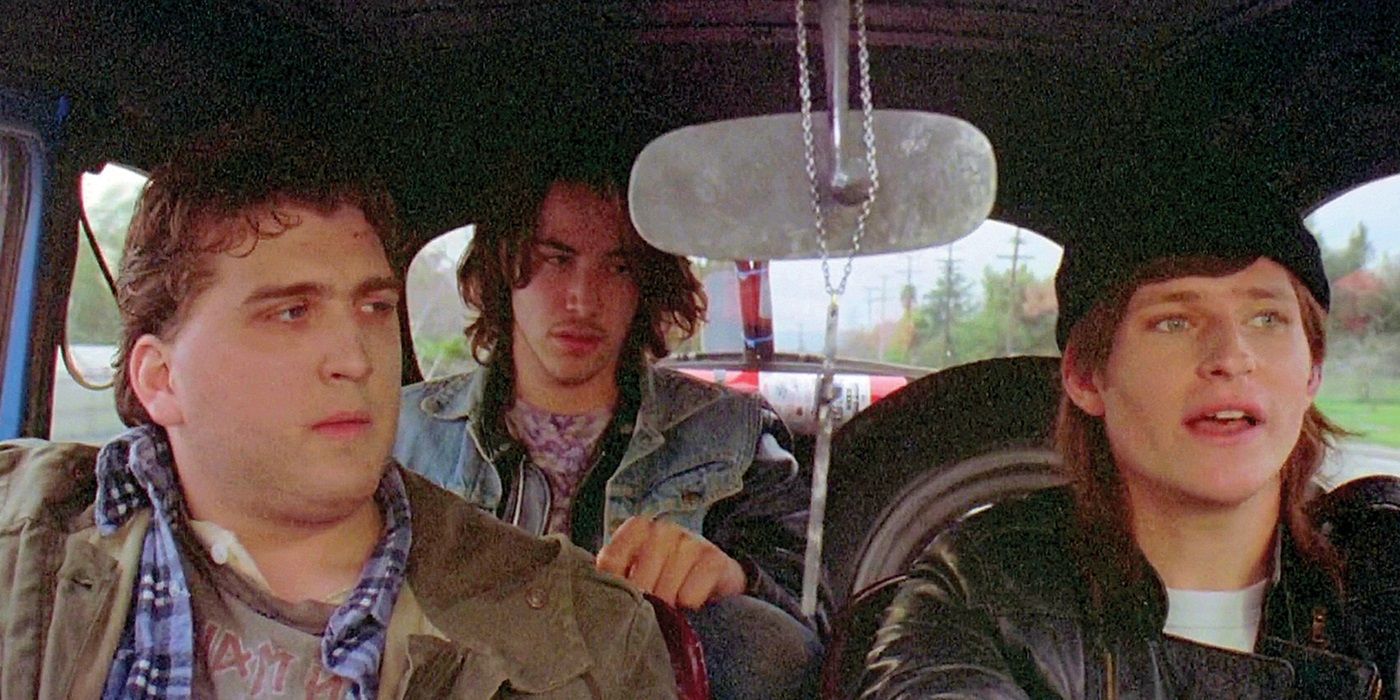The crime drama took a bold approach with its narrative structure and was rewarded with critical acclaim.
While noir stories first emerged with dime store detective novels in the 1940s, the genre has proven to be far more fungible than its origins suggest. Not every film noir has to be set in a sprawling urban metroplex and star either Sam Spade or Phillip Marlowe. In fact, the noir genre has often succeeded when it incorporates elements of horror, action, science fiction, and even comedy. In one of the more creative reimaginings of the genre, the 1986 crime drama River’s Edge combined a gripping murder mystery with a dark coming of age story.

With a cast that includes a young Keanu Reeves and Crispin Glover, it may be easy to assume that River’s Edge is a straightforward teen drama in the vein of John Hughes’ films. The truth couldn’t be further; River’s Edge is a dark exploration of guilt, inherent violence, and existentialism that uses the noir genre to show its characters’ transition from adolescence to adulthood. Although it’s focused on the ramifications of a brutal killing, River’s Edge inverts the narrative of a noir thriller with a bold approach, by revealing the culprit at the very beginning.
What Is ‘River’s Edge’ About?
Set within a small town in Northern California, River’s Edge opens by revealing that the teenager John (Daniel Roebuck) has murdered his girlfriend Jamie (Danyi Deats). His actions are observed by a young boy Tim (Joshua John Miller), Matt’s (Reeves) younger brother, who reacts to the murder with chilling apathy. The revelation of the culprit does not preclude the film from having tension, as River’s Edge deals with the anxiety that comes after witnessing an act of violence. River’s Edge goes a step further by challenging viewers’ instincts as the characters never react or respond in the way the audience would expect. For instance, though John confesses to his friends that he’s killed Jamie, they initially do not believe him, dismissing it as a joke. When John then takes his friends to see her body, their reactions vary from apathy to mild worry, to even sinister amusement from Layne (Glover) who becomes preoccupied with ensuring John never gets caught by the police. Fear of authority is present in many film noir projects, but it’s particularly relevant in River’s Edge considering the age of the protagonists. As they understand the responsibility that comes with their knowledge, Matt and his friends are forced to grow up very fast.
‘River’s Edge’ Explores the Dark Side of Americana
 Although it doesn’t share the urban setting of most classical mysteries, River’s Edge is able to use its isolated environment to examine loneliness. The Northern California community in which the film takes place seems divorced from the rest of society, as everyone seems to know each other and has no interest in going anywhere else. Jamie’s murder serves as an inflection point that forces Matt to consider what his community’s “values” really are. With the lackluster reactions to the murder of a teenage girl, there’s no telling what other darker secrets the town may hold. The best film noir movies have a psychological element that spans beyond just one mystery. In River’s Edge, John’s actions show the dark side of Americana.
Although it doesn’t share the urban setting of most classical mysteries, River’s Edge is able to use its isolated environment to examine loneliness. The Northern California community in which the film takes place seems divorced from the rest of society, as everyone seems to know each other and has no interest in going anywhere else. Jamie’s murder serves as an inflection point that forces Matt to consider what his community’s “values” really are. With the lackluster reactions to the murder of a teenage girl, there’s no telling what other darker secrets the town may hold. The best film noir movies have a psychological element that spans beyond just one mystery. In River’s Edge, John’s actions show the dark side of Americana.
Director Tim Hunter creates visual parallels with film noir features by transforming the small town into a grim, empty wasteland. The nighttime photography is stunning in particular, as the visual gloominess reflects the same foreboding secrecy as Los Angeles does in Chinatown. These moments serve as the perfect way for River’s Edge to cast its coming-of-age elements in a different light; while Matt’s intimate encounter with Clarissa (Ione Skye) would be portrayed as exciting in a straightforward teen film, their sexual liaison is undercut by the tragedy that they are recovering from. In Matt’s mind, this may be the last moment in which he can truly appreciate the joys of youth. The film also indicates that John isn’t the only dangerous figure in their community, as the presence of Dennis Hopper as a complex but ultimately violent marijuana dealer, Feck, enhances the intensity of the situation.
‘River’s Edge’ Leaves the Audience With Questions

River’s Edge still follows the noir narrative model, as much of the film focuses on the police dissecting evidence from the crime scene and tracking John’s whereabouts. This gives both the characters and audience a unique window into the investigative process, as they observe the common mistakes and red herrings that occur during a murder case. Beyond showing the incompetence of law enforcement, the investigative storyline serves as a constant reminder of the violent images in the film’s opening moments.
What’s most ironic is that by the end of River’s Edge, there’s still an element of ambiguity to John’s motives, as his motivations are never expressly explained. The film spends time showing how society reacts to a gruesome murder, yet only briefly gets to touch on why the crime was committed in the first place. By merging the uncertainty of a coming-of-age narrative with the structure of a murder mystery, River’s Edge becomes a profound meditation on why violence continues to persist in society. It is no wonder the movie drew critical acclaim upon release.





